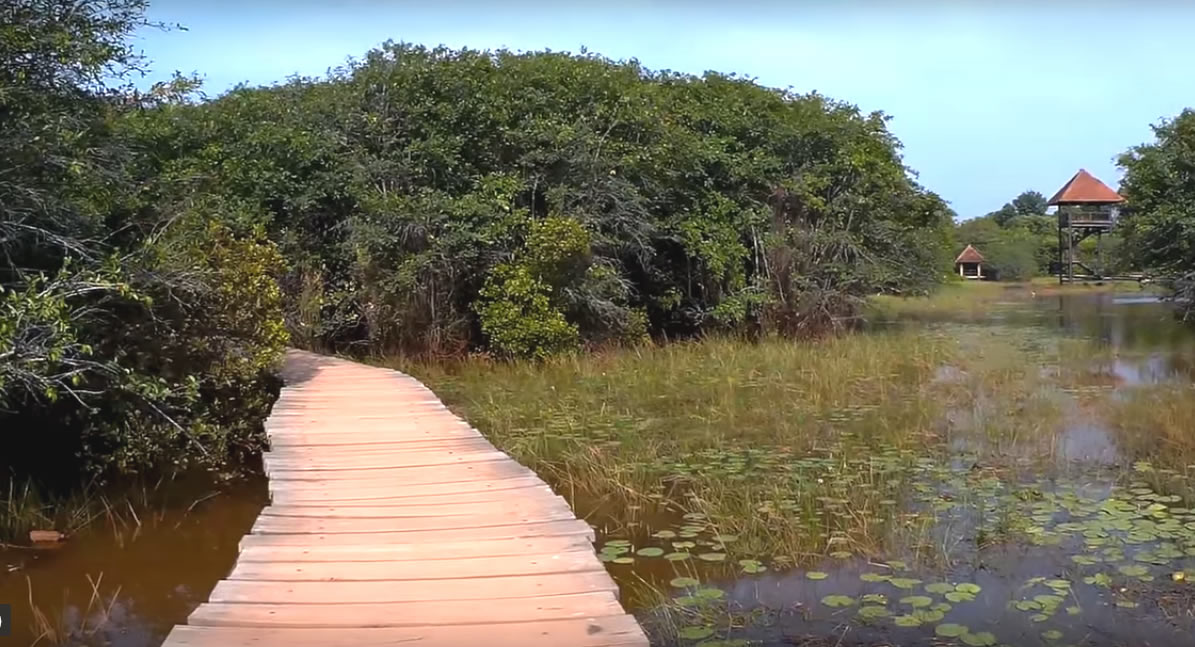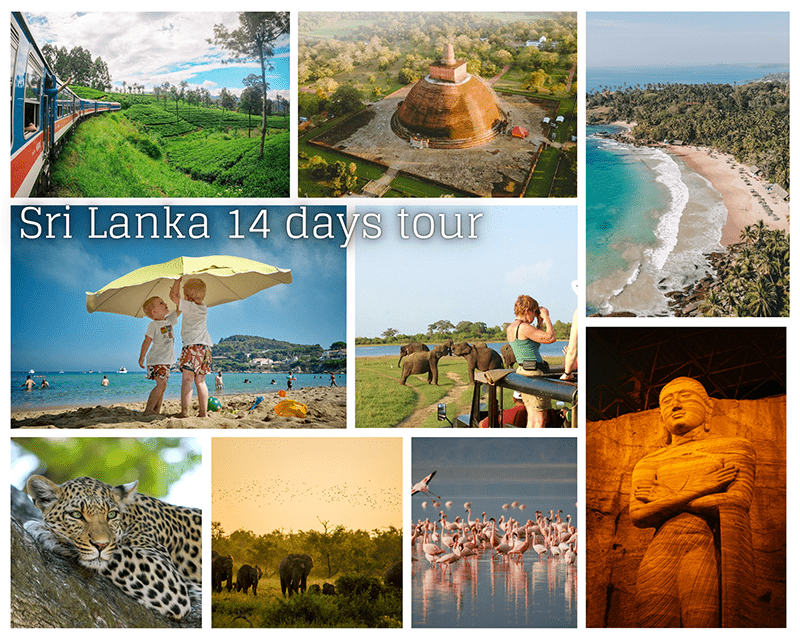Top Twenty-Five Places to See in Colombo and Colombo Wetlands
Venturing on a Colombo Sightseeing Itinerary is the best way to see important places in Colombo such as Gangarama temple, Indeoende memorial hall, Galle face green etc. Colombo is a fascinating multi-ethnic, multi-cultural city in Sri Lanka. Therefore, Colombo Sightseeing tours are very popular among travellers, especially among foreign travellers. Colombo is included in most Sri Lanka trips such as Sri Lanka 4 days tour and 7 days classical tour.
Table of Contents
- Top Twenty Five Places to See in Colombo and Colombo sightseeing tour
- What are the 19 best places to visit on the Colombo sightseeing itinerary
- Colombo is being transformed into a heritage city
- Importance of wetland to Colombo
- Useful articles on Colombo
- 1. Independence Memorial Hall
- 2. Pettah and the surrounding area
- 3.Sea Street – Antiques and Jewellery
- 4. Vegetable market
- 4. Main Street
- 5. Malwatta road
- 6. Church Street
- 7. Chekhov mansion
- 8. Old town hall
- 9. Old post office
- 10. Dutch museum
- 11. Kaiman gate
- 12. Colombo Street Art Market
- 13. Old Parliament building
- 14. Visiting Twin tower Colombo Sightseeing Itinerary
- 15. Lighthouse/clock tower
- 16. Visiting York Street on Colombo Sightseeing Itinerary
- 17. Visiting GOH on Colombo Sightseeing Itinerary
- 18. Visiting President House on Colombo Sightseeing Itinerary
- 19. Colombo Zoo
- Here are our top five wetlands in Colombo
- Importance of wetlands to Colombo
- Forest cover maintains the climate
- 20. Beddegana Wetland Park
- 21. Diyasaru Wetland
- 22. Kolonnawa Wetland
- 23. Talangama Tank
- 24. Bellandwila Wetland Park
- 25. Colombo Floating market
Top Twenty Five Places to See in Colombo and Colombo sightseeing tour
Perhaps you are wondering what place to see in Colombo or maybe you are wondering what are things to do and see in Colombo on a 1 day layover, as your cruise ship call on to Colombo harbour. Keep reading you have landed on the perfect article that gives you the information you need.
Venturing on a Colombo Sightseeing Itinerary is the best way to explore this fascinating multi-ethnic, multi-cultural city of Sri Lanka. Therefore, Colombo Sightseeing tours are very popular among travellers, especially among foreign travellers. Colombo has included in most Sri Lanka trips such as Sri Lanka 5 days tour and Sri Lanka 6 days itinerary.
Colombo is the commercial capital of Sri Lanka and the most crowded city on the island. It is not just a city of importance, but it is also a beautiful and astonishing city in its own right. The architecture of many of the buildings you see in Colombo is essentially British. Same time the city shows the characteristics of large developed cities in the world. The sheer varieties you will find in Colombo take you by surprise. No other city in the South-Asian region can match the vibrancy of Colombo. Colombo offers many interesting places to explore and in this article, we line up the 24 best places to visit on the Colombo sightseeing itinerary.
In actuality, the Dutch and the British have influenced the architecture of a number of buildings in Colombo. During your tour of Sri Lanka, you need to make sure you catch glimpses of these buildings and the rich architecture they have.
A trip to Colombo is not complete if you do not visit some of its popular attractions such as Galle face green, the museum, Gangarama etc. When it comes to eating and drinking hotspots, there are many choices, especially for tourists.

What are the 19 best places to visit on the Colombo sightseeing itinerary
Colombo city tour is one of the top sightseeing tours in Sri Lanka and there is very high demand for this Short trip among travellers. The sightseeing tour includes dozens of places but you may not visit all of them on your Colombo city tour due to time constraints. here is the list of places that can be visited on a Colombo sightseeing tour.
- Pettah and the surrounding area
- Sea Street – Antiques and Jewellery
- Vegetable market
- Main Street
- Malwatta road
- Church Street
- Chekhov mansion
- Old town hall
- Old post office
- Dutch museum
- Kaiman gate
- Colombo Street Art Market
- Old Parliament building
- Twin tower
- Lighthouse/clock tower
- York Street
- GOH
- President House
- Colombo Zoo
- Baddegana wetland
- Diyasaru wetland
- Kolonnawa wetland
- Talangama wetland
- Bellanwila wetland
- Floating market Colombo
Colombo is being transformed into a heritage city
Colombo is the commercial capital of Sri Lanka where most important economic activities take place. Colombo is about to go under huge transformation in the immediate future with the newly elected government. The project which was planned to develop Colombo as a heritage city will be accelerated from 2021.
There are many changes to take place in Colombo under the project such as moving the foreign ministry and police headquarters to other places. Both buildings that were accommodating the foreign ministry and police headquarters will be renovated and enhance their original colonial architecture to make an important tourist attraction.
Urban Development and Housing Ministry Secretary Nimal Perera said that while Colombo Port City would be the “new city”, the old, heritage city would be emerging with the transformation of 150-year-old buildings in Fort and Pettah.
Many heritage buildings such as the Gaffoor Building have already been restored to their former glory in the early stage of the program from 2012 to 2015. The Gaffoor Building which was being renovated under the Sri Lankan Navy will be functioning as a boutique hotel in the future. It is renovated at a cost of Rs. 3 billion and is planned to complete by December 2021. The hotel will be consisting of 3 floors and a rooftop swimming pool.
Another landmark building, which is 183 years old, where the Grand Oriental Hotel (GOH) was accommodated was in very bad shape due to unsatisfactory maintenance. The GOH building also had been refurbished at a cost of Rs.250 million. The hotel will be functioning under the management of water’s edge hotel. “There are some Singapore investors who are interested in this hotel as this resembles the legendary Raffles hotel (in Singapore),” Mr Perera said
“The road next to the GOH and running alongside Police Headquarters will be a pedestrian walkway with marquees on either side of food and other stalls aimed at attracting cruise tourists who spend one day in Sri Lanka,” he said, adding that the President’s vision is to attract 5 million tourists during his tenure of office and these developments are aimed at providing night-life and other entertainment in the city.
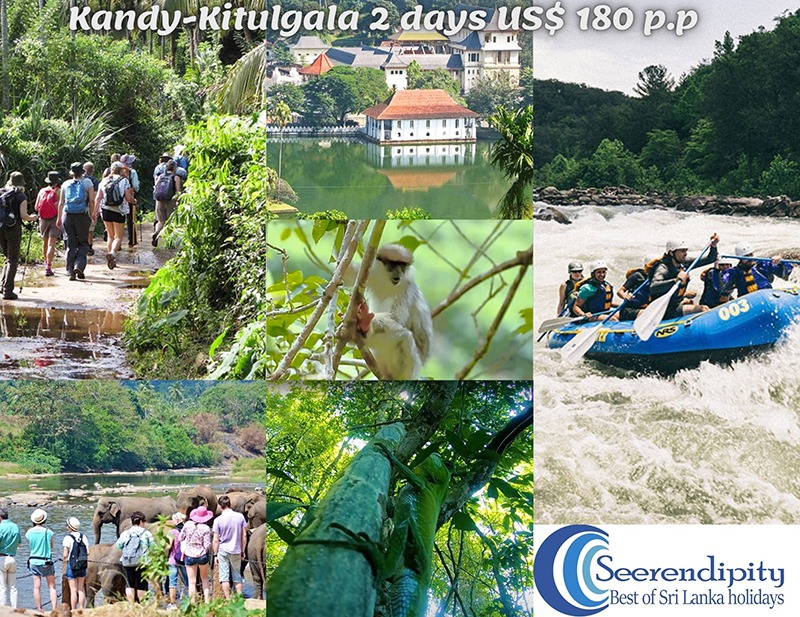
Importance of wetland to Colombo
The wetlands in Colombo help the city in many ways, it controls the flooding by absorbing the excessive rainwater, provide a breeding ground for many fauna species, help to maintain forest density in the city, control the heat, it is been used as a source of food by some people and these wetlands add beauty to the city.
Once covered with dense foliage of rain forest, the city had accommodated one of the deadliest big cats in the world, the leopard (panthera pardus kotiya) which is a subspecies of leopard, endemic to the island.
Today there are no leopards in Colombo and they are restricted to national parks. Today, you would encounter leaf monkeys and mischievous macaques that try to steal your sandwich or watch a squirrel scuttle across your path, still, there are several places within the borders of Colombo where you can taste the jungle-like atmosphere.
Useful articles on Colombo
- Best and cheap Colombo food and places to eat in Colombo
- Where to stay in Colombo for 1 night
- Colombo beach
- 10 best beaches for 1 day trip from Colombo
- Places to see in Colombo
- 1 day Colombo itinerary with Colombo walking tour
- Finding a favourite hawker stall in Colombo
- A beautiful temple in Colombo-Gangarama
- Shore excursions Colombo Sri Lanka
- Colombo fashion week
- One day trip from Colombo
- Colombo vacation packages
- One day trip to Mirissa from Colombo
1. Independence Memorial Hall
Independent square is one of the sites in Colombo that must be included in the Colombo sightseeing tour. With a beautifully landscaped garden, it is located in the most beautiful corners of the city. Independent square is built after typical Sri Lankan architecture and has a large number of columns adorned with beautiful and intricate carvings. Usually, Independent square is part of every Colombo sightseeing tour and is located in Colombo 7.
Portuguese built the first fortification in Colombo and the land, which was allocated to the fortification is called the fort even today. The fort is situated between Galle face, Pettah and Kompanna Vidiya. From the western side, it is flanked by the ocean. Today fort is occupied by important institutions such as banks, hotels, offices, government institutions, and shopping areas.
Colombo is divided into 15 postal zones of which Pettah is considered the most historical part. Pettah shows the rich historical past of Colombo with its majestically rising colonial buildings while high-rise buildings show the modernizations of Colombo in recent times.
Pettah is picturesquely located bordering the ocean and attracts foreign and local tourists. Most of the reputed hotels are located here, therefore a large number of tourists hang around the fort. Other than enjoying comfortable accommodation facilities fort is a place to visit a large number of important attractions. There are many Man-made attractions, natural attractions, restaurants and shopping areas in the fort.
Beira Lake is the leading natural attraction in the fort while the old Parliament is described as the major colonial-styled construction. Twin towers, the highest building of Colombo located near the southern border of Fort near the Hilton hotel.
Recently, Colombo is given a considerable improvement in its infrastructure and a facelift aiming to make it the “garden city of Asia”, under which the fort was given special care, while it is the place visited by most holidaymakers in Sri Lanka during their Colombo sightseeing tour.
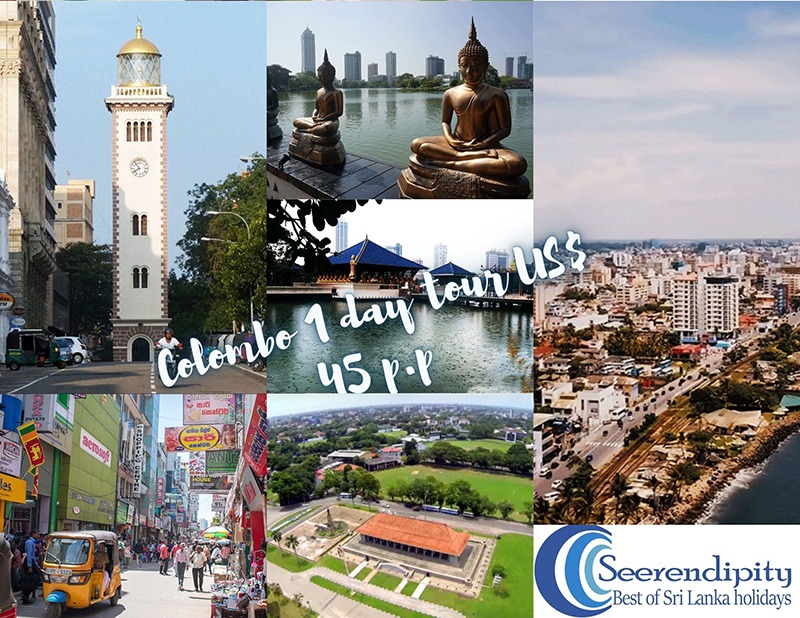
2. Pettah and the surrounding area
A Colombo sightseeing tour is incomplete if you won’t visit the bazaar area of the city known as Pettah. Pettah is the centre of Colombo and the most visited part of the city. It attracts hundreds of thousands of buyers and sellers every day. In pettah, one can buy every imaginable item in Sri Lanka.
The streets in Pettah are separated according to the products being sold. For instance, on one road is Ayurveda products, the next road is for electronic equipment, and another street is reserved for clothing. Don’t miss this interesting shopping corner of Colombo, if you want to see a typical Sri Lankan market. You definitely find here a very delightful time due to the authentic common Sri Lankan shopping atmosphere.
3.Sea Street – Antiques and Jewellery
Sea Street is stretching along the western border of Colombo, between the city and the Colombo port. Most of the jewellery workshops and shops are found here. There are large numbers of exquisite fine designed jewellery to buy in thousands of shops that are lined up at the end of Sea Street. Sea Street is believed to be the best place to buy jewellery in Colombo and the prices are very reasonable due to the concurrence.
4. Vegetable market
The vegetable market is located just opposite the jewellery shops and stretched roughly about 300 meters inland. The Colombo market is one of the places that travellers should get off the vehicle during the Colombo sightseeing tour because having a walk in the market is the best way to explore the market.
The street features fruits and vegetables at full length. It provides good options for buyers of vegetables and fruits, due to a large number of sellers with varying prices and qualities. The southern border of the street is created by the Galle-Colombo main road, where it features fruits, toys, electronic items, sweetmeats, and leather items. The market operates on weekdays and Saturdays.
Gangarama, one of the oldest Buddhist temples in Colombo is included in most Colombo sightseeing tours. It showcases a large number of paintings and Budha statues in different styles and different sizes. The Museum of Gangarama temple showcases some of the very valuable and rare artefacts.
The image house of Gamgarama should be included in every Colombo sightseeing tour as it is one of the few places in Colombo to see a large number of Buddha statues concentrated in one place. Photogenic Simamalaka, which is predominantly a wooden structure is located about 100 meters away from the main temple and no one fails to catch it with the camera during the Colombo sightseeing tour.
4. Main Street
Main Street is mainly reserved for clothing but shops that sell electronic items are mingling in the lineup. The main street is about 2 km in its full length; it begins in Malwatta (flower garden) and ends up at Sea street. Main Street is very wide but the traffic moves very slowly due to the human congestion.
Hundreds of large shops and small stalls alike serve the buyers. This is a place to bargain, the prices are very affordable here and if you are good at the bargain you can buy products cheaper.
5. Malwatta road
Malwatta road is one entrance to Pettah and it begins just in front of the main Railway station. It is the main entrance for people who travel by bus or train. The end of Malwatta is demarcated by the beginning of Sea Street and Main Street.
Large numbers of leather, mobile, audio and video and electronic shops are lined up along Malwatta road. They are selling new as well as used items for buyers. The southern end of Malwatta features bags, cases, and synthetic flowers and moving westward brings you to York Street.
6. Church Street
Slightly off the beaten track is Church Street. Church Street is one of the busiest roads featuring dry rations and grocery items in bulk. Church Street is about 3 km in its maximum length and ends up at Armor Street. The popular Dutch church, Wolfendahl church is located about halfway down the road. There is nothing much to see here other than big Lorries and wholesale shops.
7. Chekhov mansion
Administratively Colombo is divided into 15 postal regions (Colombo1 to Colombo 15) and the Chekhov mansion is located in Colombo 1. It is located very close to the Colombo harbour next to the bazaar area of the city. The Chekhov mansion is situated between the Sir. Baron Jayatilaka Mawatha and the Mosque road. Today the building is known as the Grand Oriental hotel, one of the luxurious hotels that cater to international tourists.
It was the living residence of Anton Chekhov as he came to Colombo for a short vacation in 1890. His stay in this mansion had become a memorable incident, while he had written the world-famous novel Guseph as he was staying there. In order to honour this world-renowned artist, the building was also named as Chekhov mansion.
8. Old town hall
This colonial building is located in the heart of Colombo near the Kaiman gate. It was used as the main quarters of the Colombo municipal council. It was decided to construct this building on 16th January 1866, by the member of the Council and the first gathering of the council took place in 1873, under the patronage of Governor Sir William Gregory.
9. Old post office
This gigantic building was constructed in 1895 and located just in front of the Queen’s house on president road. It was constructed by the department of state Construction at the cost of RS 324,000. This colonial mansion was designed by a well-known British architect H.F.Thomalin. It functioned as the main branch of the postal department of Si Lanka until the construction of a new main post office building recently.
10. Dutch museum
The museum is located in the busiest part of the city and surrounded by shops, offices, hotels and other important institutions. The museum is located in one of the oldest buildings in Colombo that dates back to the latter half of the 17th Century. Initially, it was used as the living residence of the Dutch Governor, Thoma vanri, later it functioned as a hospital, storage house, training place for police officers and a telecommunication centre. Today it is functioning as a museum and houses a large number of valuable artefacts.
11. Kaiman gate
Once the Portuguese took control of the city, they built the Colombo fort and it was surrounded by a wall. There was only two access point through the wall between the fort and the outside. The main gate was located near the Gaspaha junction and the old town hall. Ther
There had been an iron construction in the form of an arch with a bell near the gate. Also, there had been a water ditch with a large number of crocodiles next to the bell. The Portuguese had executed people here and fed the crocodiles with perished people. The bell was put to use every day in the morning and evening as the fort was opening to the city. The bell was also used to convey the message of special occasions such as curfew to the general public.
12. Colombo Street Art Market
Colombo’s art market has a vibrant and colourful atmosphere and is held several times a month. But, even though it was started as a weekend art exhibition nowadays there are paintings to be sold almost every day and developed into a daily art exhibition.
Designers, sculptures, and artists, sell their exquisite artistic works at very affordable prices here. The collection of arts here mainly consists of young and novice artists but there are arts from popular Sri Lankan artists as well. The main themes of most of the exhibits are locally popular subjects such as Si9giriya frescoes, sceneries in the village, beaches, monks etc.
The event is taking place at one of the most beautiful corners of the bustling city, Colombo7. A large number of exhibits are exhibited along the green borders of Viharamahadevi Park. And buyers have the option to go along the railing of Viharamahadevi and select the art one by one.
Art enthusiasts have the opportunity to enjoy different styled artistic works in the cool and calm atmosphere of Viharamahadevi Park. The buyers have plenty of time to choose the best artwork among the thousands of pieces.
Viharamahadevi Park is the greenest patch of land in the city located adjoining the Street art gallery. The best time of the day to start here is in the morning, just after breakfast. By noon most of the artworks disappear and the buyers have only selected items to see. People who are interested in art have easy access to the National Art Gallery here which is situated just opposite the Street art exhibition.
13. Old Parliament building
The old parliament with largely rounded columns is built during British rule in Sri Lanka. Today it is majestically standing in the busiest part of the city facing the Galleface. This is a building with some greek architectural designs and majestically stands in front of the Galleface, near the roundabout. Today it is functioning as the presidential secretariat and visitors are not allowed to enter the building.
14. Visiting Twin tower Colombo Sightseeing Itinerary
Twin tower is the tallest building in Pettah and is located in Colombo 1 or pettah, which is the busiest quarter of Colombo. The twin tower rises just next to the old parliament and it is surrounded by top hotels in Colombo such as Galadari, and Kingsbury. Today it consists of a large number of shops, offices and residential areas.
15. Lighthouse/clock tower
One of the oldest construction in Colombo, dating back to the British colonial era. Earlier it functioned as a lighthouse and helped the ships to be on the safe route. Later it was given the responsibility of a clock tower. Lighthouse is located near the president’s house and next to the old post office.
16. Visiting York Street on Colombo Sightseeing Itinerary
A Large number of airline offices, banks, shops and money-changers can be found along York street. York Street is believed to be established by Dutch administrators in the early 16s. It had been a canal used for transporting goods and passengers using boats. Later the canal was replaced by a road during the British colonial era, today it is known as York street.
17. Visiting GOH on Colombo Sightseeing Itinerary
Grand oriental hotel (GOH), is one of the oldest buildings and one of the oldest hotels in Colombo. It is located near the Colombo harbour towards the northern end of York street. The colonial building of GOH was in dilapidated condition for many years, due to the lack of maintenance. The building was recently (2021) renovated and it was given its imposing look and grandeur look again. The reconstruction was carried out under the program of the government aimed at transforming Colombo into a heritage city in Asia and attracting foreign travellers.
18. Visiting President House on Colombo Sightseeing Itinerary
Occupied by the British governor during the British rule in Ceylon, this spacious mansion was maintained by the government of Sri Lanka. Today it is the official residence of Sri Lankan president.
19. Colombo Zoo
Did you know Colombo zoo is one of the oldest in the world? This mega-menagerie was opened in the early 19’s by an animal exporter called John Hagenbeck. He bought a part of the present zoo (5 acres) in order to collect and keep the animals. Later in 1936 the animal collection centre was taken over by the government and entrusted the management of the zoo to the zoological department.
Today it is expanding over 23 acres with a collection of animals from all around the world. This beautiful place is located in dense foliage and it is a place to experience the fascinating animals of Mother Nature.
The zoo has evolved into an animal research and breeding centre to this day and even conducts molecular biology research. Other than educating people on the animal world and exhibiting various animals from around the world, the zoo is functioning as an animal welfare, animal conservation and breeding ground with the systematical and scientific process.
It conducts a breeding program on animals and special attention is directed to increasing the number of endangered and endemic animals through the in-house breeding process.
Colombo zoo has a collection of about 3500 animals from around 350 animal species. The number of animals varies in large due to the free-living colony of birds and breeding fish. It is an aquatic fish section, the first section of the zoo visitors encounter just after the zoo. It has a large collection of aquatic animals collection including fish, amphibians, Sea Lions, and Marine Invertebrates.
The animal section is the most attractive section of the zoo and every visitor spend a considerable amount of time here. It has a collection of animals covering mammals, reptiles, birds, and butterflies. The diversity of the birds and mammals is a very high degree and the zoo has a collection of mammals from 100 species while the number of species of the birds is 110.
In the animal section, visitors can see a large number of indigenous animals. It also has a collection of animals from other countries and some of them are cortically endangered animals such as Arabian Oryx, Black Rhino etc.
All sections of the zoo are set up in a manner it gives close contact with nature to the animals as well as the visitors. The environment at the zoo is very calm and quiet in order to maintain a stress-free atmosphere for the animals.
There are several animal performances such as elephant performance, Chimpanzee performance and sea lion performance, which attract the attention of all visitors to the zoo. The performance is showcased in selected venues at selected times. The newest addition to the zoo is the zoo museum. It is open to the general public on 26th June 2013.
The zoo hospital is another important part of the zoo, which helps to maintain the health of the animals. It is under the purview of the veterinary team that includes veterinaries, Education Assistants, Research Assistants and other support staff.

Here are our top five wetlands in Colombo
The steamy tropical city of Colombo has an extensive green cover and a network of wetlands, which are coming under important places to See in Colombo. The wetlands of Colombo spreads over 20sq km making Colombo the only Ramsar wetland city in Southern Asia.
However, most travellers of Sri Lanka do not have the opportunity to explore the pristine forest cover and wetland of Colombo. Usually, a Colombo city tour means a Sri Lanka short trip to visit important historical and cultural places in Colombo. The Colombo sightseeing tour also includes shopping in Colombo.
The Colombo city tour is a popular activity among travellers. The Colombo city tour includes in most Sri Lanka trips and Colombo is the starting point as well as the ending point of Sri Lanka tour itineraries.
Perhaps you are hanging up your boots for a moment or using Sri Lanka as a stepping stone before heading to another country, you have to experience the fascinating wetland cover of Colombo, which helps to keep the temperature of the city under control. A large tract of forest diminished over the last few centuries on the island due to the invasion of concrete jungle fuelled by economic development.
Still, there are many patches of forests and wetlands within the borders of Colombo to explore; these pockets of forests are home to a large number of birds, butterflies, mongoose, monitor lizards, cobras, and vipers. The wetland network of Colombo is the habitat for 250 species of plants and trees and 280 species of animals living around the wetlands.
Importance of wetlands to Colombo
The wetlands are not new to Colombo. history of wetlands in Colombo is going back many centuries and there had been many wetlands in Colombo during the Kotte kingdom. Relatively low altitude from the sea level, and located downstream of Kelaniya River causing many areas of Colombo to come under water during the heavy rain. Some of those low-lying areas have been turned into marshlands over the many centuries.
The people of Sri Lanka benefitted in many ways due to these wetlands. It adds natural beauty to the city, gives protection while preventing the flood during heavy rain, cleans the polluted water, functions as a feeding ground for the animals and birds, and gives a much-needed peaceful environment for people to relax.
Forest cover maintains the climate
Maintaining the forest cover and natural habitats such as wetlands is very important to maintain the ecological balance in the environment, especially in cities like Colombo which are been developed fast.
Perhaps you have experienced the extreme heat in the summer of 2019, that resulted from the heat waves, making many European cities like a hotplate. In the wake of increasing heat, the governments of many European countries set up pools and waterholes in cities and urban areas in order to help people to cool themselves and to tame the increasing heat.
Even though Colombo is a populated metropolis in the tropics, the temperate rises rarely above 35C°, the heat in the city is automatically controlled by a collective effort of patched forests, wetlands and, sea breeze. The wetland cover of Colombo spreads over 20sq km, and it is made of rivers, lakes, rice paddies, marshlands, tidal flats, flood-receding lands, ponds and reservoirs.
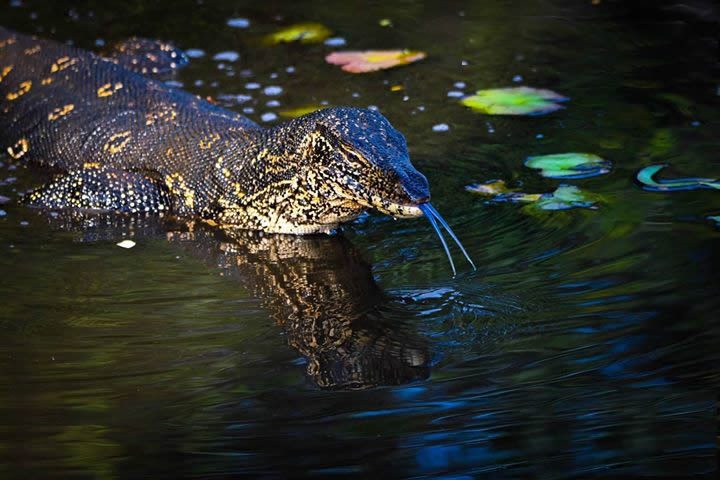
20. Beddegana Wetland Park
Beddegana Wetland Park is a fantastic piece of development project launched by the government of Sri Lanka with the help of the World Bank. Beddegana Wetland, as it was initially called, functioned as a flood-trapping marshland, however, its valuable forest cover was not open to the public due to its impassability. The wetland park lies within the borders of Sri Jayawardena Kotte, which is a fiercely crowded quarter of Colombo, it is hard to imagine the existence of such a green oasis within the hustle and bustle of Colombo.
The park is developed in such a way that it allows the visitors to have a leisurely stroll and hang around the marshy grad lands, between the trees and plants of the marshland without disturbing its main functionality of saving the city from flooding.
The park is carefully crafted without disturbing nature; the park is a perfect spot to have a bit of fresh air while hugging the cool air coming from the nearby water body. The wooden platform helps you to walk over the marshland while enjoying the beauty of a large array of Fauna and Flora.
The relentless development and redevelopment of Colombo can become tiresome sometimes, but that is not the case for this fabulous wetland park and jungle walk. The visitors may have a different opinion on the Beddagana wetland park; however, it cannot be denied that Beddagana Wetland Park has done a great job of maintaining a balance between nature and economic development.
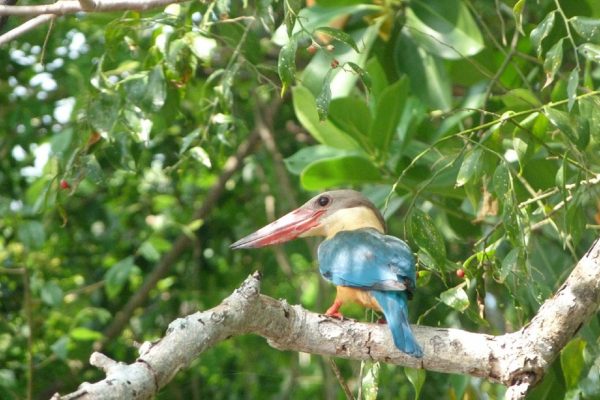
21. Diyasaru Wetland
Overlooking Diyawanna Lake, this man-made wetland park in Thalawathugoda is home to a large number of avian fauna species, fish species, as well as animal species like monitor lizards and monkeys. The best time to visit the park is before 10 am, early hours are the best time to spot a vast array of birds residing here, and the wetland is blissfully serene at any time of the day.
There is a possibility of encountering large water monitor lizards, which can whizz across the water like prehistoric sea serpents. Sighting of cormorants that dive into the water in frequent intervals in search of fish is a usual sight here. Few city dwellers had seen a crocodile lurking in the water but, thankfully, sightings are very rare.
The butterfly garden, a part of the Diyasaru wetland is a great place to see a large number of butterflies. According to park management, the butterfly garden is frequented by around 80 species of butterflies.
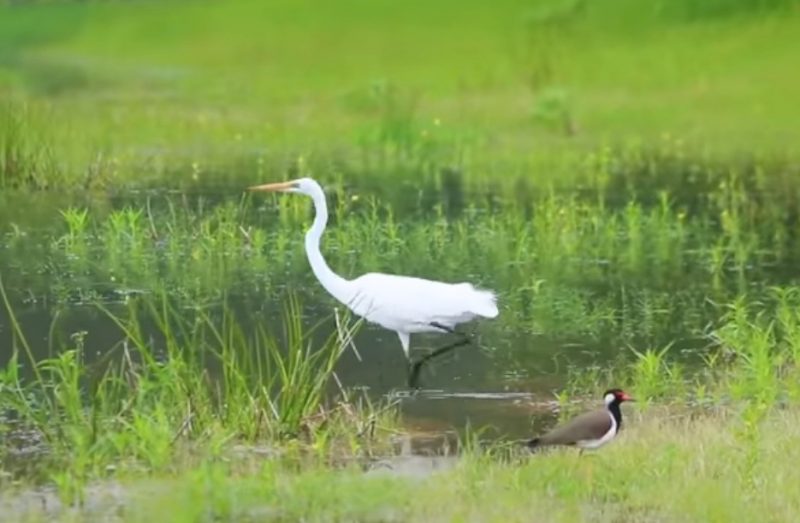
22. Kolonnawa Wetland
Another popular tourist place in Colombo, the rapid urbanization of Colombo has resulted in unplanned landfilling, therefore several areas of the city are coming underwater during the monsoon, and the problem keeps aggravating every year.
As the yearly flooding submerges highly residential areas like Kolonnnawa, it is causing a heavy financial loss to the country. However, Kolonnawa is yet another important natural asset of Colombo city, the wetland is primarily a lowland area that absorbs excessive rainwater.
The urban development department planned an ambitious program to improve the drainage system in the area in order to control the flooding. The development of the Kolonnawa wetland is a part of the project, in which the wetland was developed as a place to study the wetland (wetland education centre) while restoring the natural habitat.
Attracting visitors is another aspect of Kolonnawa wetland product, which was included with nature trails and an education centre. Even though Kolonnawawa wetland is not well designed and immaculately built like Diyasaru Wetland Park, this wetland still deserves your attention, because it is very rich in fauna and flora species.
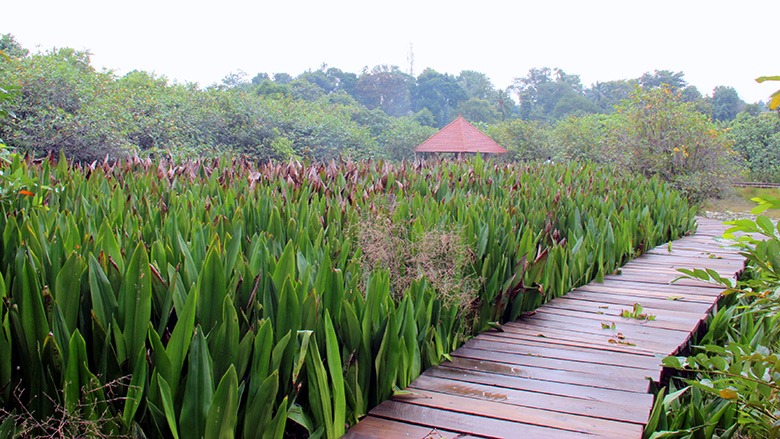
23. Talangama Tank
Similar to all great urban green spaces, entering Talangama wetland gives you instant relief. The torrential roar of the vehicles melts into the plants, trees and water body and it is very easy to forget that you are surrounded by 2 million people. It is well designed and it gives you the feeling that living in a patch of forest.
Talangama is an urban town but a large number of people in this urban area are in agriculture, rice is one of the most popular crops. Talangama tank is the main source of water for the rice paddy.
Talangama tank not only provides the water, required for paddy cultivation but also has many other important functionalities such as water retention, rescuing the city from flooding, groundwater recharge, drainage, and purification and it is a home for a large number of Fauna and Flora species. Talangama tank and the wetland is a popular spot among bird watchers, where they can observe a large number of avian fauna species.
The Talangama Tank is inhabited by 70 species of birds and the number of animal species observed here is 30; the most popular animals observed are fishing cat, monitor lizard, purple-faced leaf monkey, and mouse deer. Talanagama Tank and the surrounding wetland area are designated as a wetland protection area, which is spread over 35 acres and is under the purview of the Central Environmental Authority.
24. Bellandwila Wetland Park
Just outside of Greater Colombo city is the suburb of Dehiwala, the marshland of wetland is an important wetland in Colombo and has grown to a fully pledged wetland with a large extent of mangroves, wetland trees and plants. Bellanwila wetland has very high biodiversity, where the visitors can observe a large number of bird and other animal species as well as many trees and plants.
These are the top places to see in Colombo and the least explored places in Colombo. If you wish to visit these places you can book a Colombo city tour inclusive of the above-mentioned wetland please contact us at admin@seerendipitytours.com.
25. Colombo Floating market
Floating market Colombo is a novel concept for the people of Sri Lanka and it was opened to the public in 2014. Colombo floating market is established as a convenient shopping quarter and recreation centre in Colombo. The floating market is intended to be one of the best places for shopping in Sri Lanka. Colombo floating market is the first of its kind on the island. The floating market is a part of the ambitious program of the government of Sri Lanka to make Colombo a tourist hot spot in the future. Under the development program, many changes have been done in Colombo such as renovating the colonial building, building new parks, building walking paths, re-establishing busy government offices outside of Colombo, and protecting wetlands located writhing the borders of Colombo are some of them.

